This guest post by Amanda Schmid-Scott, PhD Researcher at the University of Exeter, asks: what might a re-imagining of violence reveal about the lived experience of immigration detention?
This post is part of the Unlocking Detention project, which runs until 18 December.

Immigration detention is defined as an administrative measure, one strategy amongst a multitude through which the Home Office actions the securing of the UK border and controls immigration. Yet whilst these may appear — though not inviting — as somewhat functional and mundane spaces, facilitating the effective removal of ‘failed’ asylum seekers, or ‘illegal’ immigrants, framed within a rhetoric which emphasises their administrative character, the stories told by those who have been held within them are emblematic of a system more than purely administrative in nature.
The framing of detention as an administrative process obscures what those held in Britain’s detention centres experience as one of the most constricting of institutions, not only denying individuals of freedom, agency and self-determination but subjecting them to what can be described as a contemporary synthesis of silencing, domination and violence.
A reimagining of violence is to move away from dominant notions of violence, which focus only on the overt, physical, or the dramatic, which obscure and conceal the quotidian ways in which individuals encounter violence in detention. If, as does Hannah Arendt in her book On Violence, we consider bureaucracy as ‘the most formidable form of domination’, we are able to recognise bureaucratic processes as violent tactics used to govern life in detention.
Blindness to reality
The point of reviewing such processes in this light is to better understand how violence is felt and experienced by individuals in detention, and to realign narratives of suffering with the everyday practices and techniques characterising immigration detention.
Writing in the aftermath of the Second World War, German Jewish political theorist Hannah Arendt wrote that when it comes to understanding violence, one must consider the distinct and different phenomena through which violence exists; otherwise, she warned of a kind of ‘blindness’ to the realities they correspond to. Arendt’s theory draws from interpreting the ways in which German forces were able to administer the horrors of the Holocaust through a logic of efficiency and civility, which masked the brutal violence through which the Holocaust occurred. Whilst there are now certain ethical and legal restraints which prevent a return to such horrors, the elements that were necessary for its manifestation are, Gregory Feldman contends in We Are All Migrants, still firmly with us. One of these elements is the emphasis on ensuring a compliant and demolished being, and a focus on what he calls “cognition over thinking”; that is, the question of “how” taking precedence over the question of “why”. This simultaneously serves economic and administrative factors whilst dismissing any ethical reflection of why certain individuals are organised the way they are . In this instance, individual agency is contained or delimited to improve the efficiency of a system, therefore prioritising economy and administrative convenience above all else.
Everyday features of life in detention are framed by the Home Office as purely ‘administrative’ (or by contrast, represented by the media, who often will only report violent ‘incidents’ such as riots and self-harm) whilst the political subject (which asks “why”) is denied.
A reimagining of violence begins by disrupting the focus on immigration detention functioning as a purely ‘administrative’ measure: more than this, it looks to the ways in which administrative processes become transposed into tactics which cause harm and constrict agency and disable the political subject in Britain’s immigration estate.
The silencing effect
The ‘silencing effect’ is what Feldman refers to in describing the process which occurs when individuals experience an unjust situation and, yet due to an inability to appear as a political subject is made helpless and voiceless to change that situation. This process invariably occurs for the detained individual who, atomized and removed from political rights, their ability to resist is thwarted by a system which seeks only to govern that individual in what is considered the most efficient way.
A member of the Freed Voices group, Abdal, powerfully describes this experience in his blog post The Death Warrant, explaining that after serving a prison sentence and believing he would then be released, received the IS91 form or “the death warrant”, authorising his immediate detention and ultimate deportation. Detained in prison, he suddenly possessed less privileges than he’d had as an offender – such as accessing higher education courses – and continually faced barriers which hindered his ability to access his rights to apply for bail. Eventually, he explains the stress of this process becomes unbearable, in a system which is ‘designed to break you both mentally and physically’.
Bureaucracy as domination
Arendt identified bureaucracy as the ‘intricate system of bureaus… ruled by Nobody’. She located this form of domination as terrible in its lack of a human face, for ‘Nobody is clearly the most tyrannical of all, since there is no one left who could even be asked to answer for what is being done’.
Again this sentiment is reflected in an account described in Mary Bosworth’s recent book Inside Immigration Detention, where she illustrates the disparity between procedures used within the prison system and those employed within immigration detention. The prison service, she points out, formally acknowledges the vulnerability of new inmates in the form of “first-night-cells” which are more comfortable and where inmates are easily able to access information and support. However, in both Colnbrook and Tinsley House immigration removal centres, detainees are held in more restrictive and more severe conditions upon arrival, with one detainee revealing:
There was no curtain in the toilet or bath so I could not go to the toilet because my roommate could see me naked or in the toilet. So I did neither when I was there. The TV was very loud and there was no remote. I asked for the remote and they did not have one. They said all they could do is switch off the whole electricity for the room until the next morning. I said no, so the TV was on, loud all night and I did not sleep
Nigerian man, Tinsley House Detention Centre, cited in Inside Immigration Detention
The significance of this particular account is explained by one of the Tinsley House staff members quoted in Bosworth’s book, as ensuring that ‘when men come over to the longer-term units they are happy to be there and more obedient’.
From this, we might consider as does Josiah Heyman in his article from 1995, “Putting Power in the Anthropology of Bureaucracy: The Immigration and Naturalization Service at the Mexico-United States Border”, bureaucracy as the ‘enactment of a particular mode of thought beyond the act itself’ , as everyday processes used within detention become processes which seek to silence and subdue individuals and rob them of dignity.
As Abdal goes on, ‘it can be very difficult to find the strength to continue to fight for your rights’. How such intricate systems work, is their reliance on opacity, impenetrability and a consistent deferring of responsibility between various departments, offices and staff: what Arendt calls ‘the lack a human face’.
The basic inability to find out what’s going on is what characterises many stories from detention. It then becomes less surprising to learn of the tragic rise in self harm in immigration detention, which have doubled in the last five years. Suicide attempts in detention are at an all-time high, averaging more than one a day. And yet the immigration detention centre, for their ‘lack of a human face’ deem no one responsible. We must seek a more nuanced understanding of the lived experience of immigration detention if we are to realign narratives of suffering with the everyday practices and techniques characterising these spaces and thus avoid the so-called ‘blindness’ to which Arendt warns against.


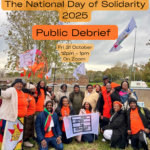
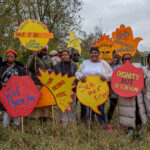
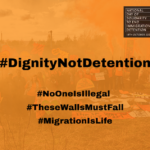

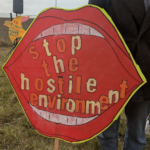




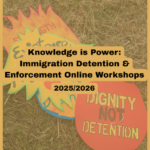


Discussion: